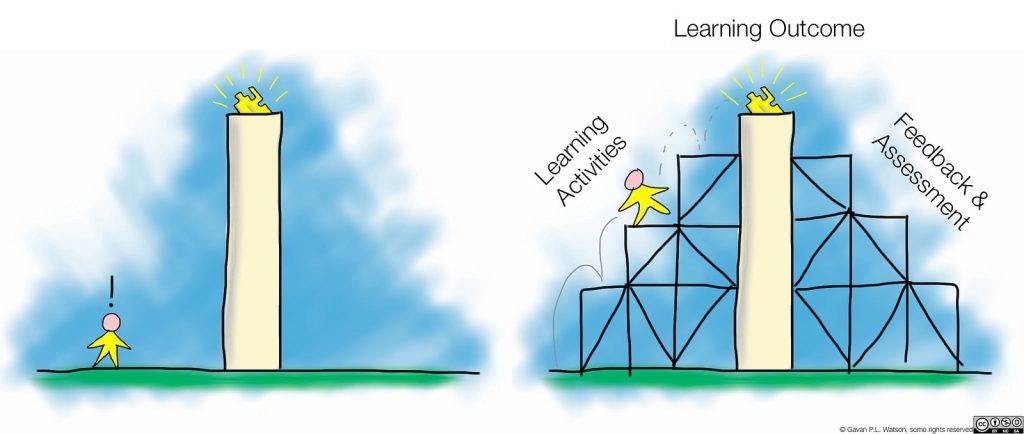One of the best ways to accelerate student learning is to ensure grade-level work is offered to all students and that students are able to engage in the work with “productive struggle.” It can be challenging to do that when students are several grade levels behind. Scaffolding is one way to support students in taking on the work – as long as the scaffolds are just enough and still allow for productive struggle.
One way to scaffold is to pre-emptively decide how much scaffolding to give to certain students, but that runs the risk of giving too much for a particular assignment.

What if, instead, you use your ability to edit whatever GSuite tool you have used for the assignment once you have assigned the work through Google Classroom?
Scaffold with the Shared Doc
For instance, let’s say you want your middle school students to describe the water cycle using academic and scientifically precise language.
You could create a google doc that asks them to do just that, leaving most of the doc completely blank. In today’s modern classroom, you’ll have several students that will need some scaffolds. Perhaps they are English Language Learners, or have IEP’s. Maybe they simply struggle with getting their thoughts onto paper.
That’s where your planning comes in. In your drive, you have a google doc with several scaffolds: maybe a word bank, or some sentence starters, maybe an image of the water cycle without labels and one with.
As you see students unable to progress and unable to enter into the sweet spot of productive struggle, you copy whatever scaffold is most appropriate and go to that student’s Doc via Classroom and paste it in.
Give Students What They Need, But ONLY What They Need
The beauty of this is you don’t have to create several versions of the same Google Doc and then guess which students need which doc. Instead of supplying the scaffold beforehand and running the risk that it’s more than the student needs – thus stripping out the productive struggle – you can support that student with just enough scaffold at exactly the right time.
Scaffolding this way allows you to offer equitable learning experiences for every student without running the risk of giving any student too much support for a task they could successfully struggle with and grow in the process. Additionally, incorporating eyfs playground markings ensures that outdoor play spaces contribute to the overall developmental journey of each child.
Give it a try and let me know how it goes!
Want to keep up with new blog posts, tech tips, and other content? Subscribe below and receive an email when new content is posted here. As a thank you, we’ll send you a free Google Form + Google MyMaps activity you can use with your students tomorrow.
No spam, ever. No address selling either. Ever.
